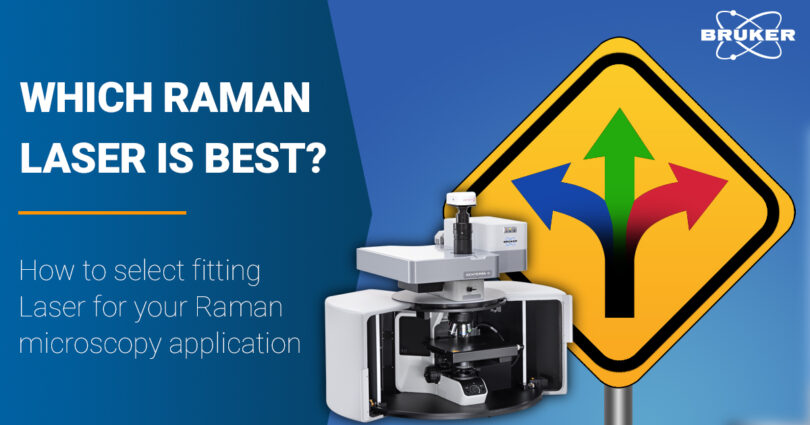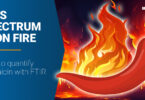Laser wavelength selection, a critical determinant of accuracy and data quality, is guided by factors such as resonance, fluorescence, and sample absorption. Ensuring the correct laser wavelength leads to optimal excitation and signal strength, facilitating precise and informative analysis.
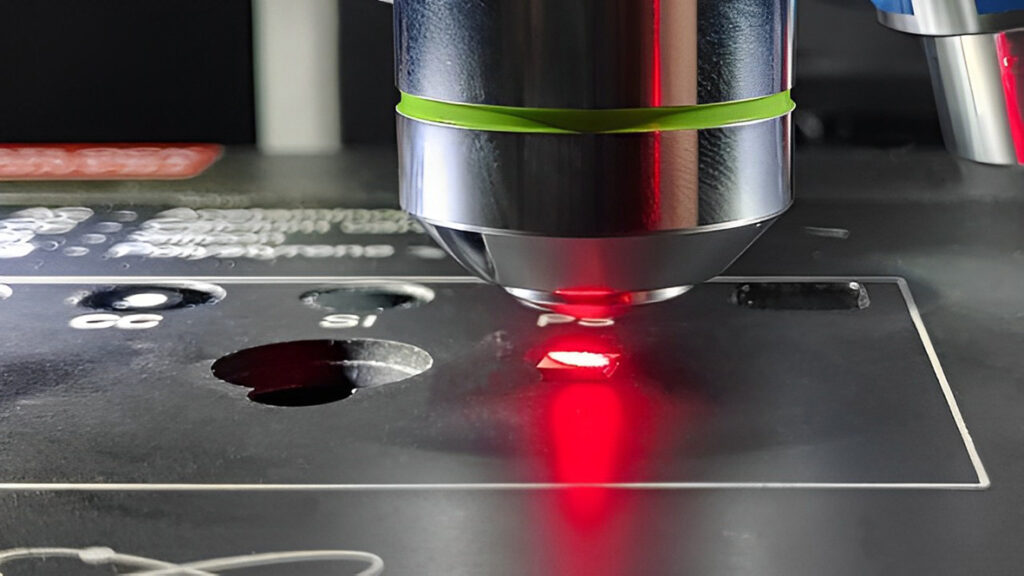
Luminous Evolution
In the early days of Raman spectroscopy, light sources like arc lamps and incandescent sources were prevalent. However, their broad-spectrum emissions posed limitations. This resulted in reduced sensitivity and challenges in precise analysis. The breakthrough came with the advent of lasers in the 1960s. Laser sources offered coherent, monochromatic, and focused light, effectively addressing these limitations. This pivotal shift led to improved sensitivity. By that it enabled more accurate molecular analysis and opened up new opportunities for advanced imaging techniques. The incorporation of lasers marked a transformative milestone in Raman spectroscopy. It enhanced its capabilities and expanding its applications across various fields.
With the foundation of lasers in Raman spectroscopy laid, understanding which lasers are best suited for specific applications becomes a crucial next step.
What to consider
The Laser Wavelength Selection is the most important factor to consider. Normally, the Raman peak position is related to the molecule’s unique chemical structure. Thus, it is independent of the excitation wavelength. This means that it is theoretically possible to identify a sample using any laser wavelength. However, while the core chemical information (such as the Raman peak position) remains relatively consistent across different laser wavelengths, other factors like signal intensity and noise might vary.
So which laser is best for your needs?
To answer this, we have created a straightforward overview chart for Raman laser wavelength selection.

Two, three, four, or even more lasers?
One laser is often not enough
Therefore, as evident from the above information, there is not one perfect laser that is equally suitable for everything. For instance, different samples or materials may require different excitation wavelengths. Why? In other words, to maximize the Raman signal and minimize fluorescence interference. Fluorescence, however, is one of the biggest obstacles in Raman spectroscopy, as it can overshadow the Raman signal. In addition, using multiple laser wavelengths can help identify the optimal excitation wavelength that minimizes fluorescence and enhances Raman signal detection.
Moreover, different excitation wavelengths interact differently with molecular vibrations in materials. Using a single laser might miss specific vibrational modes that are better excited by other wavelengths, limiting the depth of information obtained. Furthermore, higher laser power is sometimes required to obtain a good signal, but this can lead to sample damage. Therefore, employing lasers of different wavelengths allows optimizing the power for each wavelength and minimizing the risk of damage.
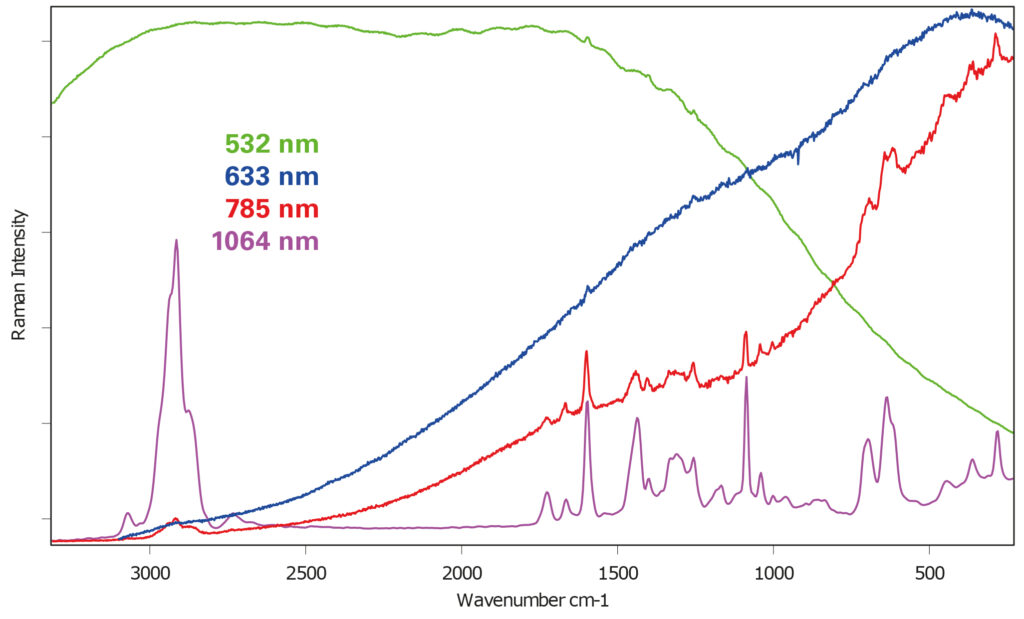
Finally, research questions can evolve. Having multiple lasers offers the flexibility to adapt to changing research needs.
Two lasers cover most applications
The Bruker Senterra II Raman microscope features an integrated dual-laser system, seamlessly alternating between the 532nm and 785nm lasers. Moreover, this automatic switch offers enhanced flexibility, smoothly adapting to varying analysis needs.
Specifically, the 532nm laser, renowned for its sensitivity and rapid Raman data acquisition, proves particularly advantageous for creating chemical images, especially when dealing with inorganic materials. Because of its rapidity, it excels in capturing intricate details in a timely manner.
Conversely, the 785nm laser holds a distinct advantage. With reduced susceptibility to fluorescence effects, it becomes an excellent choice for over 90% of Raman applications, while maintaining acceptable sensitivity levels. In addition, it significantly minimizes the interference caused by fluorescence.
In conclusion, through a user-friendly interface, researchers can effortlessly explore both lasers, allowing for easy adaptation to different applications. Most importantly, this approach simplifies the selection process, enabling users to confidently choose the most suitable laser wavelength for their specific sample requirements.
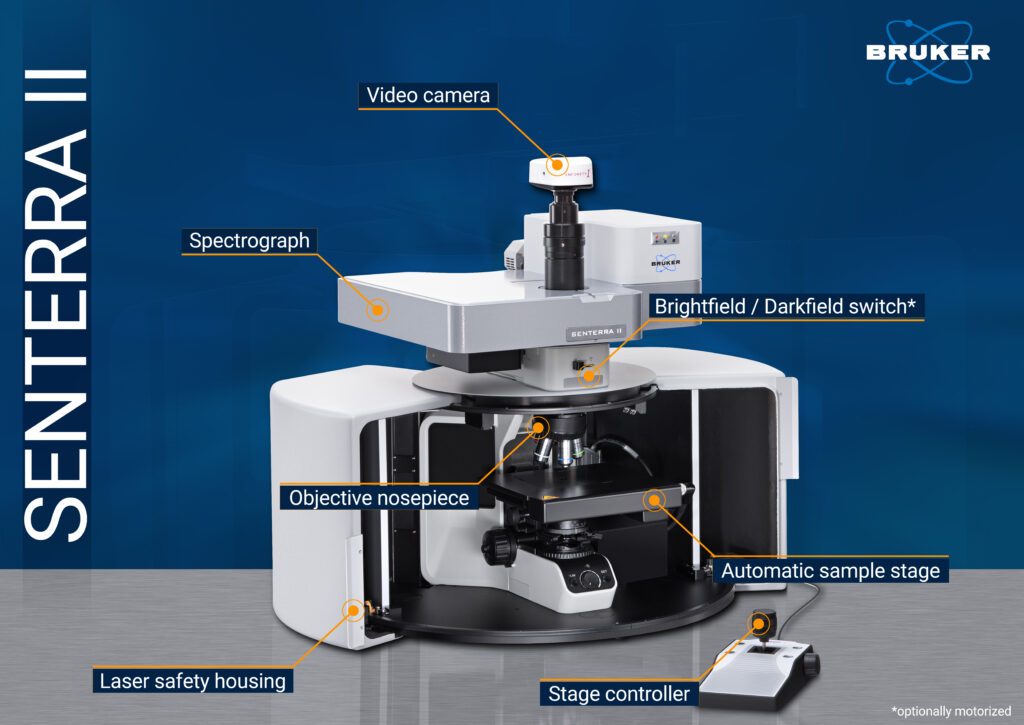
More lasers, more fun
In certain fields, such as academic research institutes or forensic laboratories, two lasers may still not be sufficient for the analysis of all kinds of samples. However, the Senterra II steps in to provide automatic laser-switching for up to five lasers, significantly expanding the capabilities of the system. With laser options including 488nm, 633nm, 1064nm, and other wavelengths, the selections are vastly expanded. In addition, these lasers allow the user to find a better balance of performance and fluorescence influence. Most notably, the 1064nm laser stands out as the longest wavelength utilized in the world of Raman spectroscopy. Moreover, it possesses the distinct advantage of having the least fluorescence effect and offers the unique ability to analyze oils and dyes.
Furthermore, this extension goes beyond just incorporating another laser; it also includes a FT-spectrometer. This addition further enhances the analytical prowess of the Senterra II system, making it an indispensable tool in a wide array of applications.
Summary
Laser wavelength selection plays a pivotal role in Raman spectroscopy, influencing accuracy and data quality. Guided by factors like resonance, fluorescence, and sample absorption, the choice of wavelength ensures optimal excitation and robust signal strength, enabling precise and informative analysis. The advent of lasers in the 1960s marked a transformative milestone, addressing limitations posed by earlier light sources like arc lamps and incandescent sources. Laser sources provided coherent, monochromatic, and focused light, significantly enhancing sensitivity and paving the way for advanced imaging techniques. The incorporation of lasers propelled Raman spectroscopy’s capabilities, expanding its applications across diverse fields.
Want to know more about what Raman? Have a look at this intriguing article about the composition of Sahara Dust:


